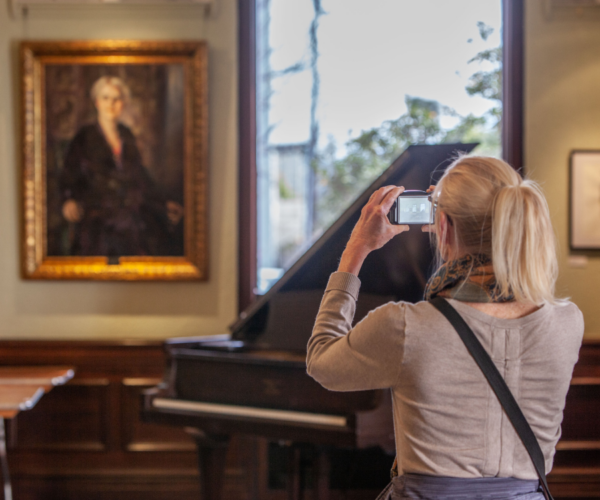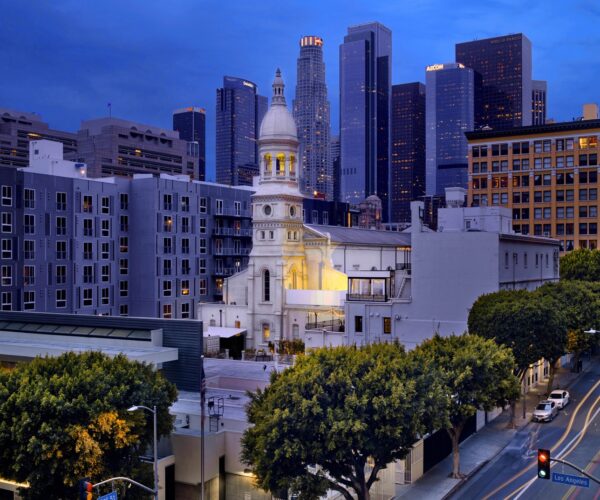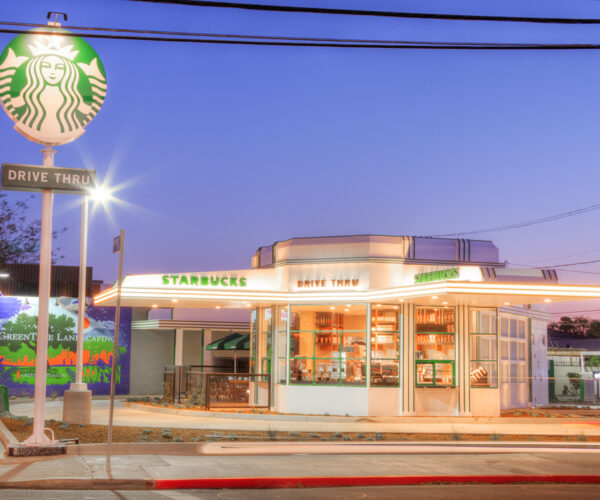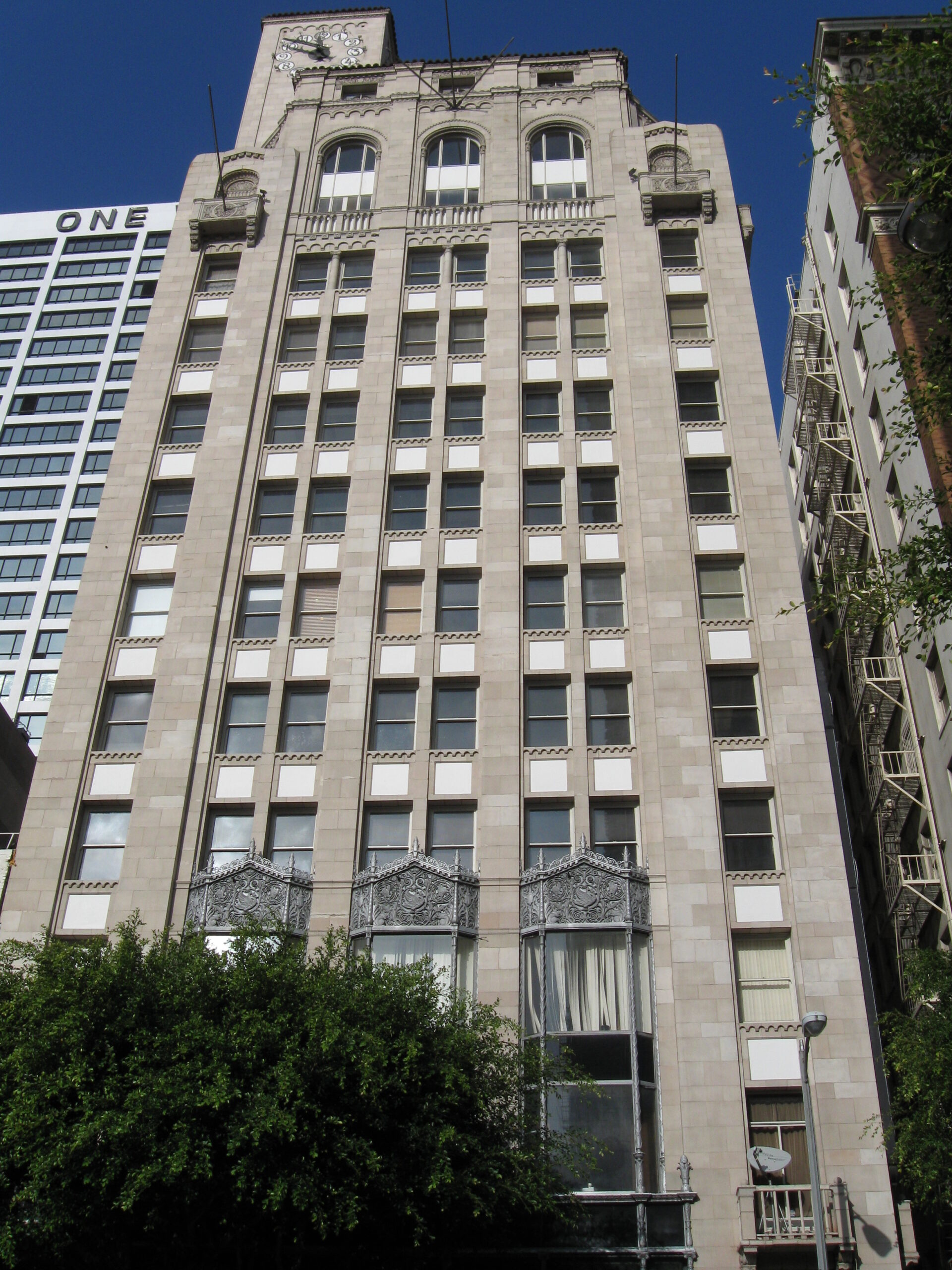Membership Matters
Article
Member Spotlight: Leslie Huemann
By Liz Leshin

Leslie Heumann has been involved with the L.A. Conservancy since its inception in 1978. With a lifelong love of historic preservation–and as a preservation professional– she has watched the preservation movement progress in L.A. for decades. Here, she shares her thoughts on why the Conservancy matters and why she decided to join the Pillar Society.
LAC: You’re a long-time member of the Conservancy; when did you first get involved and what inspired you to join and eventually join the board?
Leslie Heumann: I first became involved with the Conservancy at its birth in 1978. I learned through my work as an intern for the Pasadena Architectural and Historical Inventory at the time that a group of people were meeting to organize a local preservation organization in Los Angeles, similar to Pasadena Heritage which had just been launched. I, like many others, had become increasingly concerned that Los Angeles did not value its historical buildings and that many masterpieces, such as the Dodge House in West Hollywood (Irving Gill; 1916) and the Atlantic Richfield Building (Morgan, Walls, and Clements; 1929), were being lost. Without public pressure, it was obvious that publicly and privately funded redevelopment would continue to decimate the historic legacy of the City. I attended one or two of the organizational meetings—I specifically remember a long debate about what to call the new organization—and also was a volunteer for the first event the nascent Los Angeles Conservancy mounted, a reception in the penthouse apartment atop the Oviatt Building on Fifth Street (Walker and Eisen; 1928).
I became a member of the Board of Directors in 1992, I believe and served two terms. For part of my tenure, I was on the Executive Committee as the Education VP. I enjoyed having a voice regarding the direction of the Conservancy and was part of two debates that I think have positively impacted the Conservancy to this day, the decision to hire Linda Dishman as our Executive Director and the decision to support legal action to preserve the St. Vibiana building.
LAC: You’re a preservation professional, so you obviously care deeply about heritage conservation; why do you think it matters?
LH: I grew up in San Francisco, where old buildings were treasured. People wanted to live in a Victorian or other period residence; places like Ghirardelli Square or Jackson Square were successfully adaptively reused instead of being torn down; and street life revolved around thriving neighborhood commercial arteries. I traveled around the U.S. and saw other cities, such as New Orleans and Philadelphia, that were learning that old buildings and neighborhoods could be economic engines, not blight, and could be effective catalysts for revitalization. I think the history of a place, expressed in its built environment, is critical to establishing its identity. Los Angeles seemed to me, at the time, a desert of wasted opportunities. I wanted to help reverse that trend.
LAC: How have you seen preservation evolve in L.A. over the years?
LH: In a sense, preservation has gone from an almost counter-culture movement to mainstream. One of the most telling demonstrations of that widespread respect and acceptance is the Conservancy’s wildly successful annual Preservation Awards luncheon, where the very people who fought us in the beginning—politicians and developers—have become participants. We even have an Office of Historic Resources in City Hall—unthinkable back in 1978!
Several other aspects of historic preservation have also evolved. We’ve gone from seeing preservation as mostly an architectural beauty contest to understanding the importance of historic context. We have a new appreciation of mid and late-20th-century buildings. And we have some tools with actual teeth to advance our cause: CEQA (the California Environmental Quality Act), newly strengthened local preservation ordinances, tax incentives. The entire city has been surveyed to identify historic resources through SurveyLA.
LAC: What compelled you to leave a legacy with the Conservancy as a Pillar Society member?
LH: When I was on the Board, a friend who had been a fellow graduate student, Pauline Stein, passed away. She left a legacy to the Conservancy, and I saw how useful such funding could be to a non-profit such as the Conservancy. Finding funding is always top-of-mind at a non-profit. I resolved then that if I were ever to be in a position where I could make a similar gesture, I would. The Conservancy matters. It makes a difference in the future of Los Angeles and in its members’—particularly its volunteers’—lives. I would like to be part of its future even if I am not here to see it.
LAC: What is one of your favorite preservation success stories in L.A.?
LH: There are many, and many bitter losses, too. One quick example of a success story comes to mind because it is local to me: the transformation of a Streamline Moderne gas station at Highland Avenue and Willoughby into a drive-thru Starbucks. How perfect and how obvious and happily, a huge success, judging by the number of cars always lined up.
LAC: What is your hope for the Conservancy and historic preservation in L.A. in the future?
LH: The perfect balance between new construction and historic preservation has yet to be achieved. We still have a long way to go in educating the general public regarding the opportunities preservation offers and we have new challenges, like housing the thousands of homeless people in our city, to face. My hope is that the Conservancy continues to play an expanding and constructive role in determining the future of Los Angeles
Our member's love L.A.!
Learn more about some of Leslie's favorite places in L.A. County!
Join the Conservancy!
Become a member today and help preserve L.A. County's architectural and cultural heritage.
Read More


